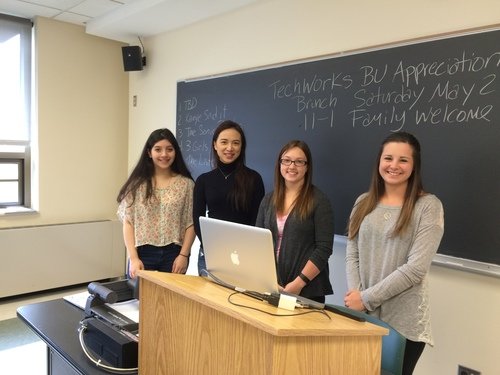Link Flight Simulator
By Katie Brown, Chih-Yin Liu, Sahar Pakravan, and Jackie Sharlach, Binghamton University
A player piano is a coin-operated piano that automatically plays music. Edwin A. Link’s father headed the company that built these pianos, and the bellows technology became the foundation upon which the flight simulator was engineered. [For a more complete history of the player piano in the Binghamton area, see and listen to the aural postcard "Boscov's Parking Ramp Player Pianos."]
In Beyond the Limits, the author mentions that the first simulators were little more than mock-ups of cockpits. Levers, wires, and hydraulic valves connected to the stick and rudder pedals enabled a trainee to control and use the cockpit instruments, as if the machine were actually flying.
Edwin A. Link, who learned to fly shortly after Lindberg’s transatlantic flight in 1927, built a simulator using pneumatic hoses and mechanisms borrowed from his father’s pipe-organ factory in Binghamton, New York. He took it to county fairs, where it attracted quite a bit of attention. In 1934, the U.S. Army Air Corps purchased Link trainers for training pilots to fly by instruments alone. By the end of the WWII, Link’s company had sold 10,000 Blue Boxes to the armed forces.
During wartime, the need to quickly train hundreds of green recruits for a variety of airplanes made the Link trainer a serious tool for pilots. Link trainers used electrical and mechanical analog devices to simulate flight. The Whirlwind digital computer was intended to be used as a flight simulator, but never was. Still the notion of using a digital computer running at real-time speeds survived.
Before 1970, most simulators still used analog devices. The Apollo program, whose goal was to land a man on the moon, put pressure on simulator manufacturing to provide more and more accurate simulations. Apollo used simulators of all sizes and shapes for every phase of the flight. Apollo astronauts spent over half of their preparation time in different simulators for various phases of their mission. With a firm push from NASA, simulator manufacturers came up with a technique of building a realistic scale model of a piece of terrain, and then “flying” a television over it under the control of the trainee’s actions on the simulator controls.
Link Aviation has really played a major role in developing Binghamton throughout the years. Our project compiles sounds and pictures from when Link created the player piano, all the way up until the end of World War II, including sounds from the Link plane simulator as well. Link Aviation drastically changed how people viewed the city of Binghamton and the impact that it has had throughout the past several decades.
Creators of this Aural Postcard sharing their research on the Link Flight Simulator (L-R) Sahar Pakravan, Chih-Yin Liu, Katie Brown, and Jackie Sharlach



